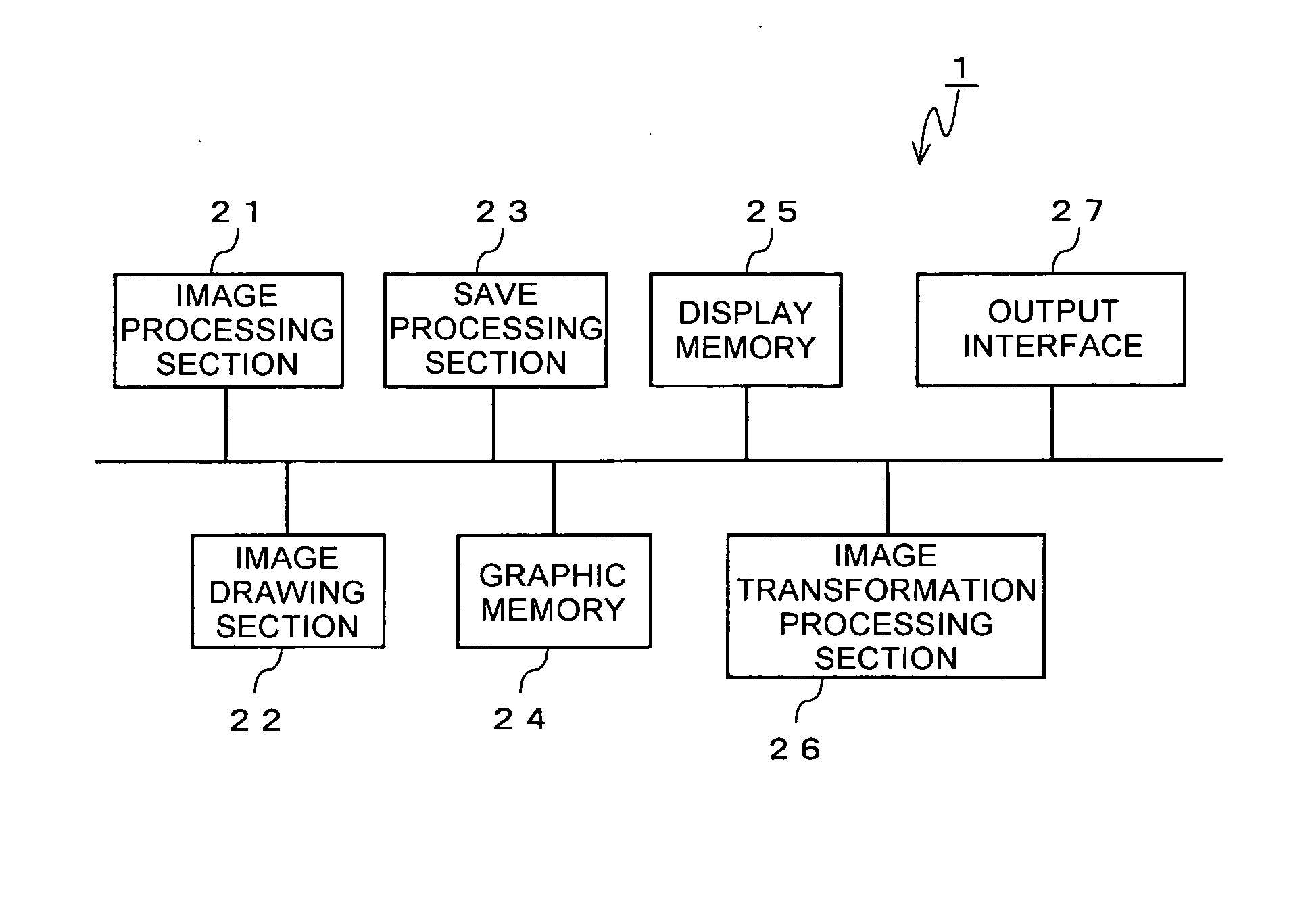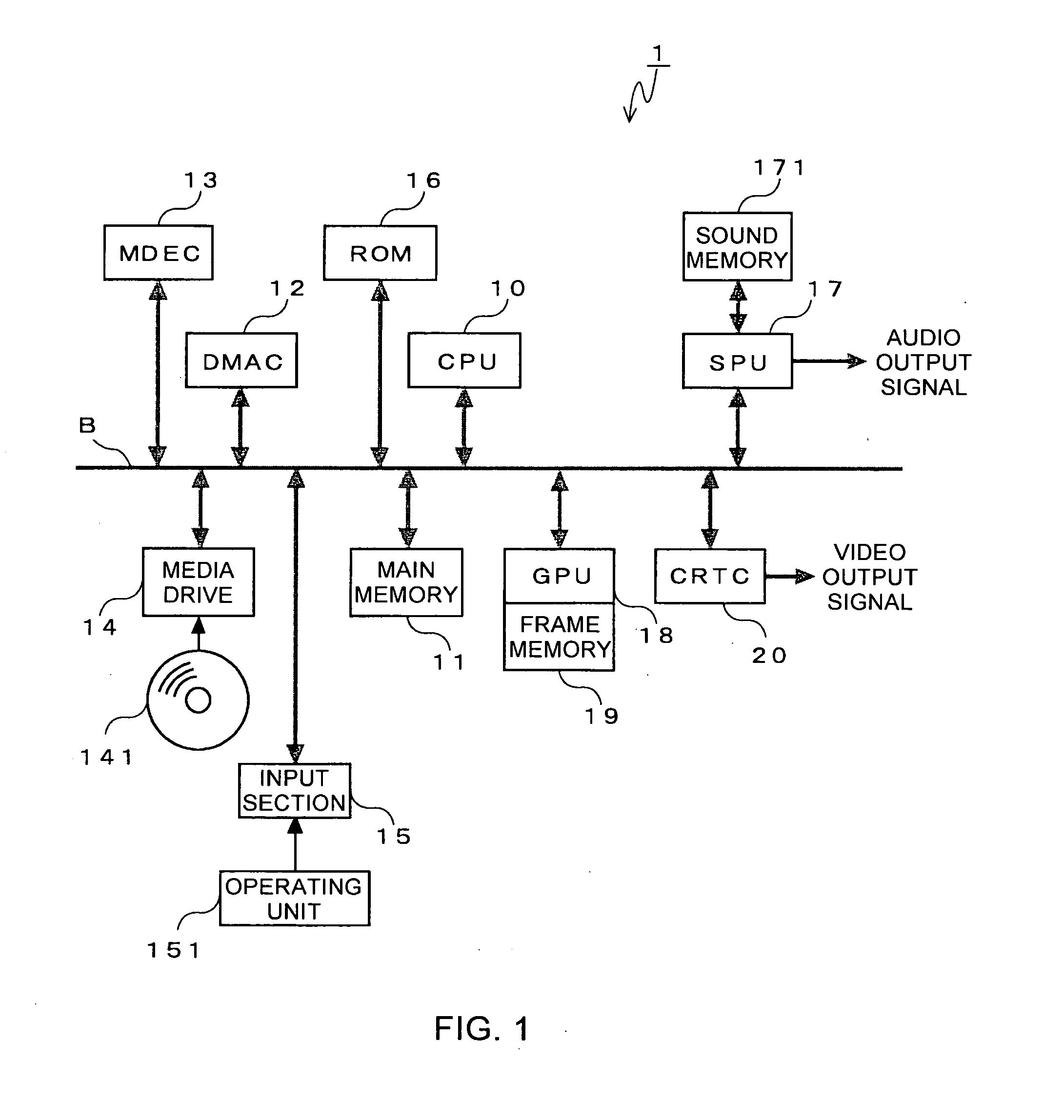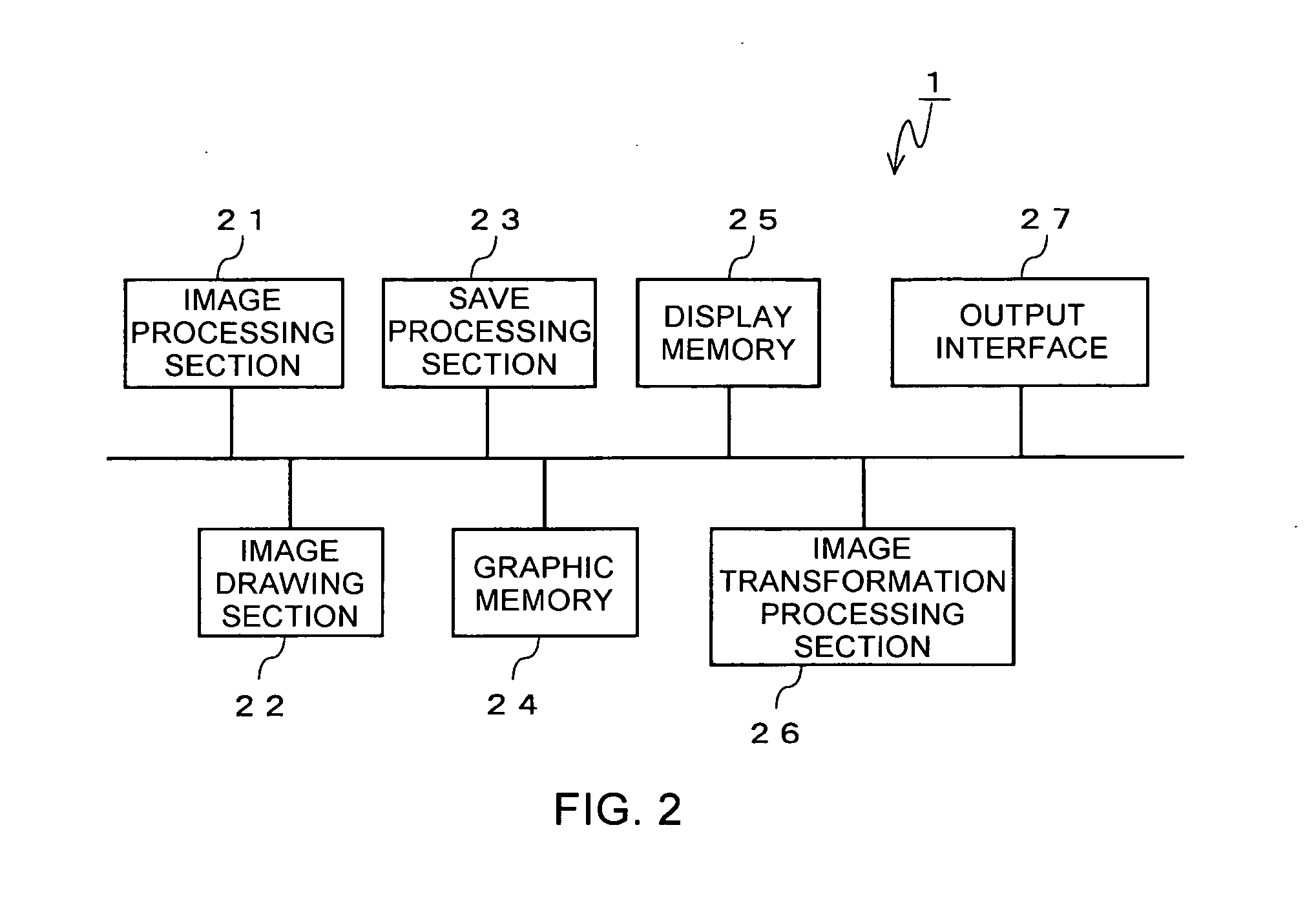Image Processing Device, Image Processing System, Image Processing Method, Computer Program, and Semiconductor Device
a technology of image processing and frame memory, which is applied in the direction of static indicating devices, cathode-ray tube indicators, instruments, etc., can solve the problems of increased latency, inability to carry out asynchronous drawing to frame memory, and inability to provide display memory with double buffer structure, etc., to achieve the effect of increasing the amount of display memory and shortening the latency
- Summary
- Abstract
- Description
- Claims
- Application Information
AI Technical Summary
Benefits of technology
Problems solved by technology
Method used
Image
Examples
first embodiment
[0069] In FIGS. 4(a) to 4(d), the display memory 25 has four buffer areas so as to be able to store four pieces of partial data (one piece of frame data).
[0070] In FIG. 4(a), a second frame data is stored in the graphic memory 24 and a quadrisected first frame data is saved and stored in the display memory 25. When pieces of partial data 1-1 through 1-3 are outputted sequentially from the display memory 25 via the output interface 27 (FIG. 4(b)), the save processing section 23 saves the pieces of partial data 2-1 through 2-3 obtained by equally dividing the second frame data from the graphic memory 24 to the display memory 25 after confirming that the partial data 1-3 has been outputted. While the pieces of partial data 2-1 through 2-3 are saved, the partial data 1-4 is outputted from the display memory 25 via the output interface 27 in succession to the output of the partial data 1-3 (FIG. 4(c)). When the partial data 1-4 has been outputted, the partial data 2-4 is saved from the ...
second embodiment
[0072] In FIGS. 5(a) to 5(c), the display memory 25 has five buffer areas so as to be able to store five pieces of partial data.
[0073] In FIG. 5(a), a second frame data is stored in the graphic memory 24 and a quadrisected first frame data is saved and stored in the display memory 25. When pieces of partial data 1-1 through 1-3 are outputted sequentially from the display memory 25 via the output interface 27 (FIG. 5(b)), the save processing section 23 saves pieces of partial data 2-1 through 2-4 obtained by equally dividing the second frame data from the graphic memory 24 to the display memory 25 after confirming that the partial data 1-3 has been outputted. At the same time, the save processing section 23 causes the display memory 25 to output the partial data 1-4 (FIG. 5(c)). Because the display memory 25 can store five pieces of partial data, the display memory 25 can save all of the second frame data at once regardless of whether the partial data 1-4 is being outputted.
[0074] ...
third embodiment
[0077] In FIGS. 6(a) to 6(d), the display memory 25 has five buffer areas so as to be capable of storing five pieces of partial data. The display memory 25 is a memory that allows an in-place transformation process and is arranged so as to be capable of writing partial data after the transformation process into the same buffer area as the buffer area in which partial data before the transformation is to be stored.
[0078] In FIG. 6(a), a second frame data is stored in the graphic memory 24 and a quadrisected first frame data is saved and transformed to be stored in the display memory 25. When pieces of partial data 1-1 through 1-3 are outputted sequentially from the display memory 25 via the output interface 27 (FIG. 6(b)), the save processing section 23 saves pieces of partial data 2-1 raw through 2-4 raw obtained by equally dividing the second frame data from the graphic memory 24 to the display memory 25 after confirming that the partial data 1-3 has been outputted. At the same ti...
PUM
 Login to View More
Login to View More Abstract
Description
Claims
Application Information
 Login to View More
Login to View More - R&D
- Intellectual Property
- Life Sciences
- Materials
- Tech Scout
- Unparalleled Data Quality
- Higher Quality Content
- 60% Fewer Hallucinations
Browse by: Latest US Patents, China's latest patents, Technical Efficacy Thesaurus, Application Domain, Technology Topic, Popular Technical Reports.
© 2025 PatSnap. All rights reserved.Legal|Privacy policy|Modern Slavery Act Transparency Statement|Sitemap|About US| Contact US: help@patsnap.com



